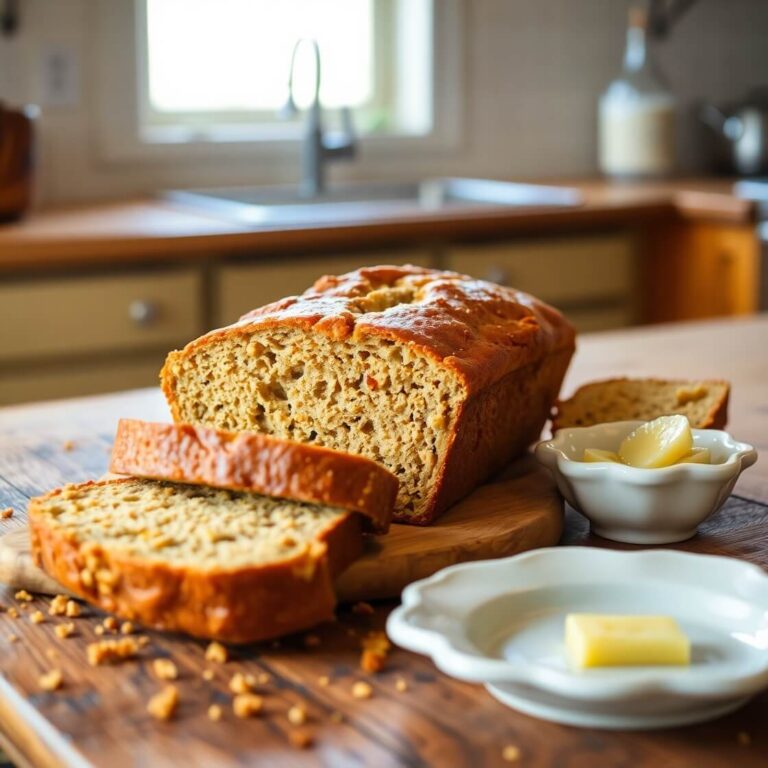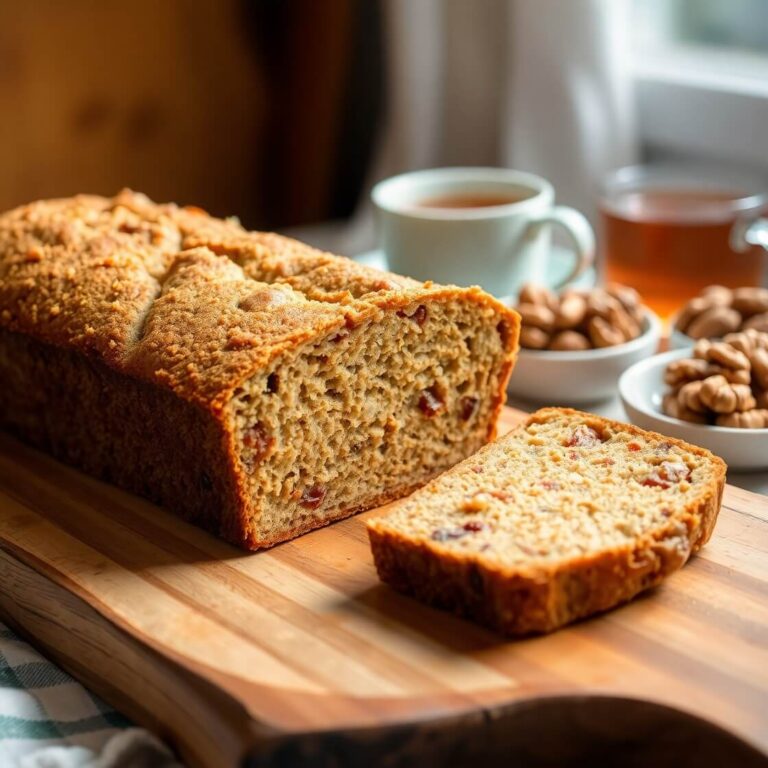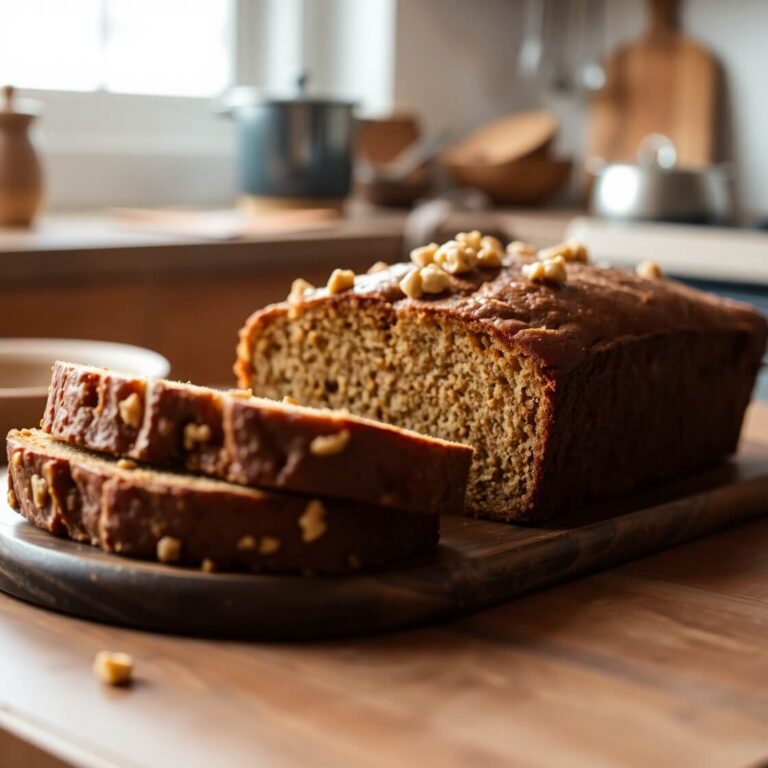
There’s something comforting about the smell of freshly baked bread wafting through the kitchen—a nostalgic nod to cozy kitchens and home-cooked meals. Cottage cheese bread is one of those recipes that feels like it has a story behind every slice. Born out of the need to make use of pantry staples and elevate simple ingredients into something soulful and satisfying, this recipe is both practical and nourishing.
Whether you’re a seasoned home baker or someone looking for a wholesome bread to accompany your meals, cottage cheese bread offers an easy-to-follow path to warm, tender loaves with a beautifully soft crumb. Stick around, and you’ll see why this underrated bread deserves a spot in your baking routine.
Why I Love This Recipe
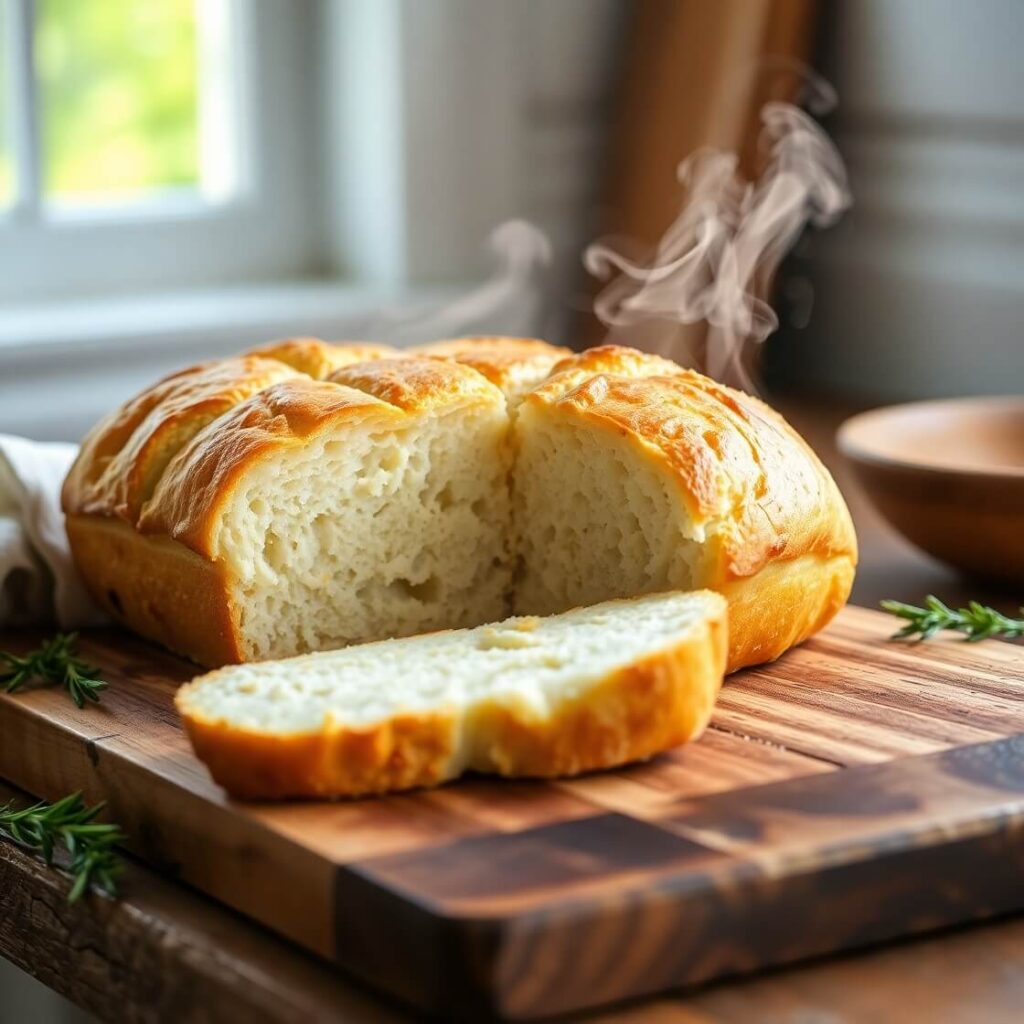
It’s hard not to fall in love with a bread that combines high protein, incredible moisture, and a wonderfully chewy texture—all without the complexity of sourdough or the heaviness of a dense whole wheat loaf.
Cottage cheese bread stands out because it marries convenience and nutrition. The cottage cheese adds a slight tang and richness, making every bite tender but hearty. It’s perfect for breakfast toasts, sandwich slices, or even just warm from the oven with a pat of butter.
This bread is a wonderful way to use up leftover cottage cheese and offers a higher protein alternative to typical homemade breads. Plus, it doesn’t require fancy techniques or tools—just a bit of time, some basic ingredients, and a warm oven.
And if you’ve ever thought bread baking was intimidating, this loaf will change your mind.
Ingredients for Cottage Cheese Bread
To make a loaf that’s fluffy, flavorful, and foolproof, you don’t need anything fancy—just a handful of pantry and fridge staples.
Here’s what you’ll need:
All-purpose flour or bread flour: This is the base of your dough. Bread flour will give you a slightly chewier texture, while all-purpose is just fine for a soft, tender crumb.
Cottage cheese: The star ingredient. Choose full-fat for richness and moisture, or use low-fat if you want a leaner loaf. Either way, the cottage cheese provides both protein and a subtle tang.
Warm water or milk: Used to activate the yeast and add extra moisture. Milk gives the bread a richer flavor, but water will do the job just as well.
Yeast: Active dry yeast or instant yeast both work. If using active dry, make sure to proof it first in warm liquid.
Honey or sugar: Just a touch to feed the yeast and balance the slight tang from the cheese.
Salt: Essential for flavor. Don’t skip it—it brings the bread to life.
Butter or oil (optional): A tablespoon or two of melted butter adds softness and flavor, but you can leave it out if you want a more rustic feel.
This recipe uses whole ingredients with the goal of achieving rich texture and deep flavor—nothing artificial or overly processed.
How Much Time Will You Need
Making cottage cheese bread isn’t an all-day affair, but it does require a little patience to let the yeast work its magic.
- Prep time: 20 minutes
- First rise: 1 to 1.5 hours
- Second rise: 30 to 45 minutes
- Baking time: 35 to 40 minutes
- Cooling time: 15 to 20 minutes
Total time: About 3 hours, mostly hands-off.
You can even prep the dough the night before and bake it fresh in the morning if you prefer.
How to Make This Cottage Cheese Bread
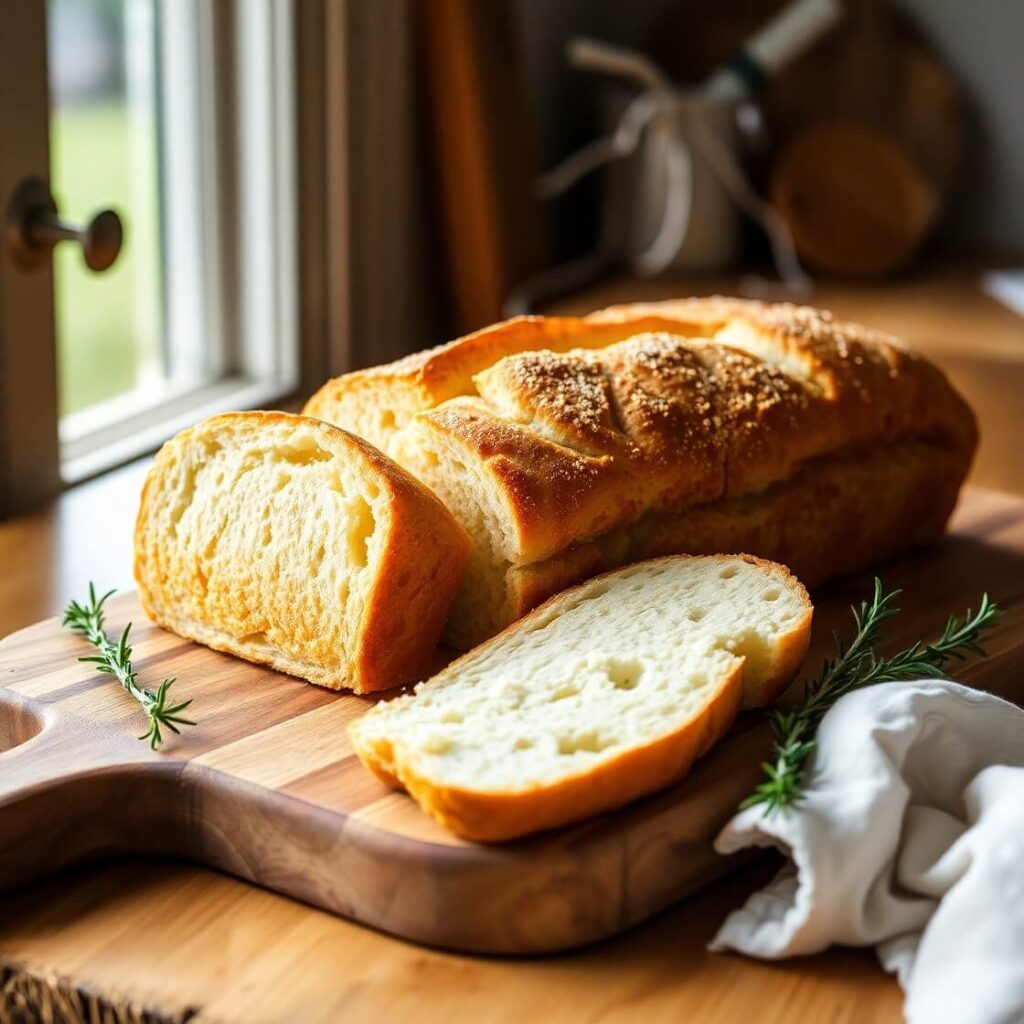
Step – 1: Warm the Liquids and Proof the Yeast
Start by warming your milk or water until it’s just warm to the touch—about 100–110°F (38–43°C). Pour it into a large mixing bowl and stir in the honey or sugar.
Sprinkle the yeast over the top and let it sit for about 5–10 minutes, until it becomes foamy. This shows the yeast is active.
Step – 2: Mix the Dough
Add the cottage cheese, salt, and melted butter (if using) to the bowl. Stir to combine. If your cottage cheese is chunky, you can blend it briefly for a smoother texture, or leave it as-is for a more rustic loaf.
Gradually stir in the flour, one cup at a time. Once it becomes too stiff to mix with a spoon, turn it onto a floured surface and knead it.
Step – 3: Knead Until Smooth
Knead the dough for about 8–10 minutes until it becomes smooth and elastic. It should be slightly tacky but not sticking to your hands. If it’s too wet, add a little more flour, a tablespoon at a time.
Step – 4: Let It Rise
Place the dough in a lightly greased bowl, cover it with a clean kitchen towel or plastic wrap, and let it rise in a warm spot for 1 to 1.5 hours, or until it’s doubled in size.
Step – 5: Shape and Second Rise
Punch down the dough gently to release air. Turn it onto a lightly floured surface, shape it into a loaf, and place it in a greased 9×5-inch loaf pan.
Cover again and let it rise for another 30 to 45 minutes, until it puffs up about 1 inch above the rim of the pan.
Step – 6: Bake the Bread
Preheat your oven to 350°F (175°C). Bake the bread for 35 to 40 minutes until the top is golden brown and it sounds hollow when tapped.
If the top browns too quickly, tent it loosely with foil halfway through baking.
Step – 7: Cool and Slice
Remove the bread from the oven and let it cool in the pan for 10 minutes, then transfer it to a wire rack to cool completely before slicing.
This allows the structure to set and prevents it from getting gummy inside.
Substitutions
Cottage cheese bread is delightfully flexible—here’s how you can tweak it to fit your pantry or dietary preferences:
- No cottage cheese? You can substitute ricotta for a similar texture and moisture, though it has a slightly sweeter flavor. Greek yogurt (full-fat) is another great option for tang and protein.
- Gluten-free flour: Use a 1:1 gluten-free flour blend designed for yeast baking. Make sure to add 1 teaspoon of xanthan gum if it’s not already included.
- Dairy-free option: Use dairy-free cottage cheese or blend soft tofu with a little lemon juice as a substitute. Replace milk with a neutral plant-based milk like oat or soy.
- Sweetener swaps: Maple syrup or agave can be used in place of honey. Just keep the ratio the same.
These swaps don’t just make the recipe accessible—they allow you to experiment and find your perfect loaf.
Best Side Dishes for Cottage Cheese Bread
While this bread is delicious on its own, pairing it with the right sides can elevate your meal into something memorable.
1. Creamy Tomato Basil Soup
Classic comfort food. The slight tang of the bread is perfect for dunking into a velvety tomato soup.
2. Herbed Chicken Salad
Pile a scoop of chicken salad on a thick slice of cottage cheese bread for a satisfying lunch.
3. Grilled Vegetables with Hummus
The bread makes a great base for grilled zucchini, peppers, and a smear of garlic hummus.
Serving and Presentation Tips
The moment this bread comes out of the oven, it begs to be sliced and savored. But how you serve and present it can take it from simple to standout.
For a casual family table, slice the bread into thick, rustic slabs and serve it on a wooden cutting board with softened butter or a drizzle of olive oil on the side.
If you’re entertaining or want to impress, cut the loaf into clean, even slices and arrange them in a linen-lined basket. Garnish the basket with fresh herbs like thyme or rosemary to enhance the visual appeal and hint at the bread’s subtle, savory notes.
You can also toast the slices lightly and top with whipped ricotta, avocado, or a poached egg for a beautiful brunch display. Remember to let the loaf cool completely before slicing for the cleanest presentation.
Tips and Tricks to Make This Recipe Better
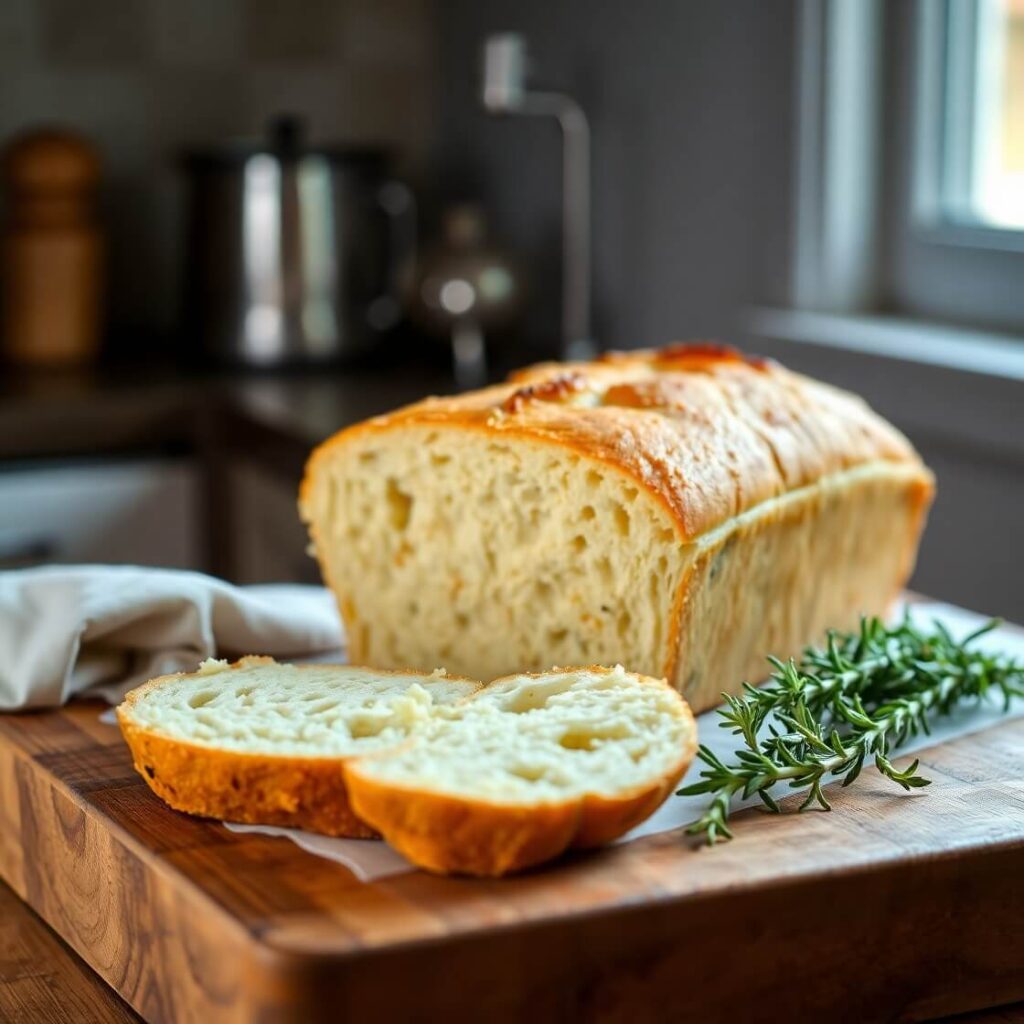
Cottage cheese bread is straightforward, but a few smart tips can make it practically bakery-worthy.
- Drain watery cottage cheese: If your cottage cheese is especially wet, strain it slightly with a fine mesh sieve before mixing. This prevents your dough from becoming too slack and sticky.
- Room-temperature ingredients: Let your eggs (if used), cottage cheese, and butter come to room temperature. This helps the dough mix evenly and rise properly.
- Use a thermometer: Bread is done when the internal temperature reaches around 190–200°F (88–93°C). This ensures it’s fully cooked inside.
- Cool before slicing: It’s tempting to cut into fresh bread, but give it time to cool. This lets the interior finish cooking and prevents a gummy texture.
- Add seeds for crunch: Want a textural contrast? Sprinkle sesame, flax, or sunflower seeds on top before baking for added flavor and crunch.
These details make a noticeable difference in the final texture and flavor of your loaf.
Common Mistakes to Avoid
Even with a forgiving recipe like this, a few missteps can turn a promising loaf into a disappointment.
- Using cold ingredients: Cold cottage cheese or milk can slow down yeast activity. Always bring them to room temperature first.
- Adding too much flour: It’s easy to over-flour your dough, especially if it’s sticky. Resist the urge. The dough should be slightly tacky—too much flour makes dry bread.
- Not letting the dough rise fully: Rushing the rise time can result in a dense loaf. Be patient and let the yeast do its job.
- Overbaking: This bread should have a golden top and springy feel. Overbaking leads to a dry crumb, so keep an eye on the oven.
Avoid these, and you’ll consistently turn out beautiful, flavorful loaves.
How to Store It
Storing cottage cheese bread properly ensures it stays soft and delicious for days.
Room Temperature:
Once fully cooled, wrap the bread tightly in plastic wrap or store it in an airtight bread bag. It will stay fresh at room temperature for up to 3 days.
Refrigerator:
You can refrigerate it to extend freshness to 5 days, though this may dry it out slightly. Toasting the slices will bring back softness.
Freezer:
This bread freezes beautifully. Slice it first, then wrap the slices in parchment and seal in a zip-top freezer bag. It’ll keep well for up to 3 months. Just thaw a slice or two at room temperature or toast straight from frozen.
Proper storage helps you enjoy this bread anytime without compromising taste or texture.
FAQ
Can I use whole wheat flour instead of all-purpose?
Yes, you can substitute up to 50% of the flour with whole wheat for a nuttier, denser texture. You may need slightly more liquid to compensate.
Is this bread good for sandwiches?
Absolutely. Its structure holds up well to fillings and doesn’t fall apart. It’s excellent for turkey, egg salad, or veggie-packed sandwiches.
Can I make this in a bread machine?
Yes, this recipe works well in most bread machines. Use the dough cycle for the kneading and first rise, then shape and bake it in a loaf pan for the best crust.
Can I use low-fat or fat-free cottage cheese?
Yes, but full-fat cottage cheese gives the best texture and moisture. Lower-fat versions will work but might result in a drier loaf.
How do I know when my dough has risen enough?
A good rule is to gently press the dough with a fingertip—if the indentation springs back slowly and not completely, it’s ready.
Cottage Cheese Bread
A moist, protein-rich homemade bread made with creamy cottage cheese, perfect for sandwiches, toasts, or snacking warm from the oven. This no-fuss recipe offers a soft interior and golden crust, making it ideal for beginner bakers and seasoned pros alike. The cottage cheese adds moisture, flavor, and a subtle tang that makes every bite satisfying. Whether paired with soup, topped with eggs, or slathered with jam, this bread becomes a staple you’ll return to again and again. Make it once and discover how simple and comforting homemade bread can be.
- Prep Time: 20 minutes
- Cook Time: 35–40 minutes
- Total Time: 3 hours (including rise time)
- Yield: 1
- Category: Breads
- Method: Baking
- Cuisine: American
- Diet: Vegetarian
Ingredients
- 3 cups all-purpose or bread flour
- 1 packet (2¼ tsp) active dry yeast
- 1 cup cottage cheese (full-fat recommended)
- ½ cup warm milk or water
- 1 tablespoon honey or sugar
- 1 teaspoon salt
- 2 tablespoons melted butter (optional)
Instructions
- Warm the milk/water until just warm to the touch. Stir in honey and sprinkle yeast on top. Let sit until foamy.
- Add cottage cheese, salt, and melted butter (if using) to the yeast mixture. Stir to combine.
- Add flour gradually, mixing until a soft dough forms. Knead for 8–10 minutes until smooth.
- Place in a greased bowl, cover, and let rise until doubled—about 1 to 1.5 hours.
- Punch down, shape into a loaf, and place in a greased 9×5-inch loaf pan.
- Cover and let rise again until the loaf domes about 1 inch above the pan rim.
- Bake at 350°F (175°C) for 35–40 minutes until golden and sounds hollow when tapped.
- Cool for 10 minutes in pan, then transfer to a wire rack to cool completely.
Notes
- Use full-fat cottage cheese for best texture and flavor.
- For a rustic look, sprinkle the top with oats or sesame seeds before baking.
- To freeze, slice and wrap tightly. Toast straight from the freezer when ready to serve.
Nutrition
- Serving Size: 1
- Calories: 145
- Sugar: 1.2g
- Sodium: 190mg
- Fat: 4.2g
- Saturated Fat: 2g
- Unsaturated Fat: 2g
- Trans Fat: 0g
- Carbohydrates: 22g
- Fiber: 1g
- Protein: 6g
- Cholesterol: 10mg


